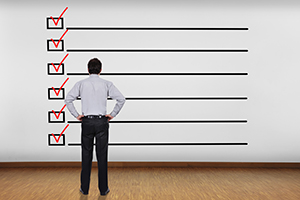A Look Inside WIPO’s Classification Practices
March 30, 2017
In an effort to better communicate internal policies on classification, WIPO has published Examination Guidelines Concerning the Classification of Goods and Services in International Applications. The document serves a guide to the goods and services examination principles applied by our trademark examiners.
Every international trademark application filed through WIPO’s Madrid System must include a list of the goods and services covered by your mark. Your list should be clear and concise, and must follow specific rules on how to categorize (or “classify”) each item—in short, it must comply with the principles of the International Classification of Goods and Services or “Nice Classification.” If these requirements are not met, your application will not pass examination and an “irregularity” notice will be issued.
To offer a better understanding of the classification principles applied, and minimize the risk of errors, WIPO has published the Classification Guidelinesin English, French and Spanish.
Building your list of goods and services
As a first step to compiling an acceptable list of goods and services, use Madrid Goods & Services Manager. This free online database will guide you through the classification process, and help you verify that the terms in your list are acceptable to WIPO and the IP Offices of 29 participating countries.
Once you’ve compiled your list using the database, the Classification Guidelines can help you fine tune your submission and avoid a number of common classification pitfalls.
What’s inside?
The Classification Guidelines are divided into three sections. The first provides general information on the Madrid System and the Nice Classification, while Section 2 outlines the classification principles applied by WIPO. Practical information and formatting guidelines are provided in Section 3.
Classification principles

As a basic principle the goods and services in your list should be classified according to their purpose or function. If this is not possible (for example, in the case of “figurines”), then classification should be based on other comparable finished products; and if none exist, you should classify your product based on its material, nature (i.e., unprocessed, semi-processed, or processed), and/or mode of operation (e.g., electric, hydraulic). Services, on the other hand, ought to be based on the type or subject matter of the activity involved. Details are provided under Sections 2.2-2.4 of the Classification Guidelines.
To help you identify the particular class(es) under which your goods or services fall, WIPO recommends using the precise language of the Nice Classification’s 45 Class Headings as a guide if you are seeking protection in territories that accept the Nice Classification. The Nice Classification’s Alphabetical List of terms of terms also suggests a particular class for each of its 8,590 terms.
In general, if a particular product or service in your list could fall under more than one class, you should describe it with enough detail to allow an examiner to correctly identify its appropriate class. This can be challenging for certain goods or services. For example, a trademark to protect your brand of “pipes” could fall under seven possible classes! (Refer to Section 2.4for additional details and examples.)
Along with these overarching principles, the Classification Guidelines also provide guidance on classifying raw materials, components (parts), and cases (e.g. for smartphones) under sections 2.2(c) – (f), as well as specific rules for the following goods and services: electronic games and game software, low-alcohol beverages or wines, filters and filtering materials, valves, kits, parts and fittings (or accessories), manufacturing of goods, association services, wholesale and retail services, and repair services. Further details can be found in Section 2.6 of the document.
How to describe your goods and services
The Classification Guidelines also clarify WIPO’s position on the use of proprietary names in the list of goods and services (Section 2.7), as well as the application of certain common expressions (Section 2.5).
For example, WIPO will accept words intended to specify or limit the scope of your trademark registration—words like “in particular”, “especially”, “including”, “i.e.” or “namely”—as long as they are followed by the names of specific goods or services.
On the other hand, WIPO will not accept broad terms (such as “and the like” or “etc.”) that prevent your products or services from being clearly identified. Expressions like “all goods”, “all other services”, or “all products other than those in Class [X]” are generally considered too vague and will not be accepted.
Formatting tips
Section 3 of the Classification Guidelines addresses common formatting issues, such as punctuation, brackets, the use of capital letters, special characters, and plural forms, and the acceptability of abbreviations and acronyms.